All about beach yoga: A sandy sequence with tips and tricks
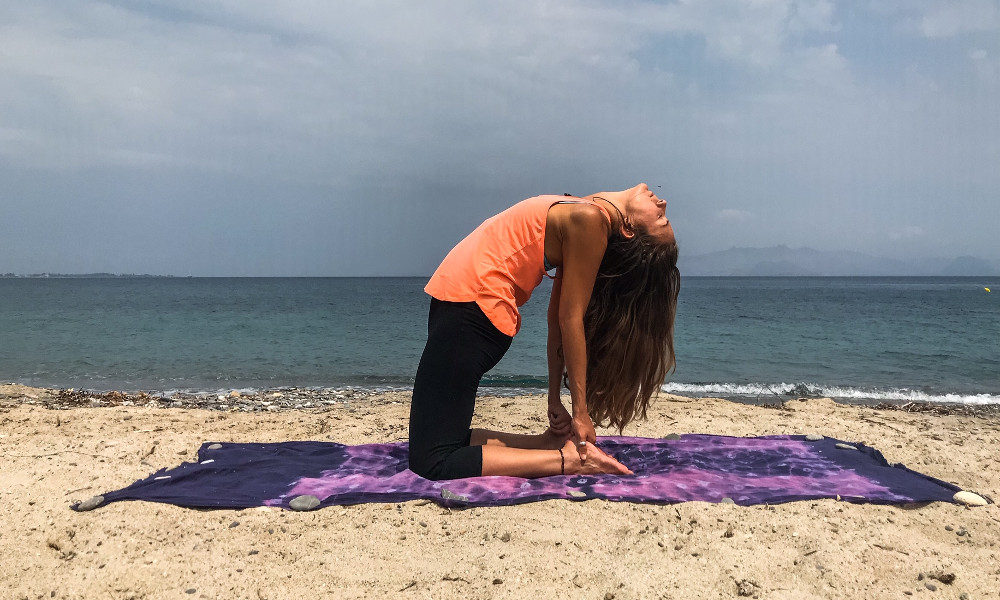
After a long winter, summer is finally here! It’s time to take advantage of the warm summer breeze and the fresh air and take your yoga mat outside. If you’re near one of the many lakes in Iowa, or if you’re heading to a coastal destination for vacation, you may want to give beach yoga a try.
Yoga in the sand may sound like a foreign concept, or perhaps even a little intimidating, but I’m here to offer a sequence as well as some tips and tricks for how to make your beach yoga session a successful one.
Pack a mat?
Definitely don’t bring your yoga mat to the beach. You’ll slide all over the sand, as the mat becomes unstable on the slippery surface of sand. Sand can also damage your yoga mat, so it’s smarter all around to practice yoga on a beach blanket or towel. The bigger the blanket or towel, the better, as more surface area means less sand getting stuck to your body.
The necessities
Besides bringing a towel or blanket, it’s imperative that you wear sunscreen if you can’t find a shady spot to practice. The sunscreen may drip into your eyes a bit if you’re sweating, so have a small extra towel on hand.
Bringing a swimsuit so you can cool off after your practice is a good idea. However, try to allow your body 15 minutes to regulate its temperature before submerging yourself in water. Even if you want to dart into the shower directly after a yoga practice, it is always recommended that you give your body 15 minutes to settle before changing its temperature so drastically.
Get to know the sand
When I am deciding where to practice, I try to find as flat a surface as possible with few sticks and stones. However, I like to put a few rocks on my beach blanket to keep the wind from blowing the edges up.
What I love about practicing yoga on the sand is that the sand is an excellent surface area to build stability in your ankles. While it is challenging, it truly is wonderful for balancing poses. Sand forces the muscles to work harder to stabilize, which is important for building standing strength and balance. Expect to fall down, though. Your yoga practice won’t be the same as it is on the flat, wooden floor of your yoga hall. Understand that you will wobble, shake and fall sometimes. It’s part of the beauty of beach yoga.
Be careful with vinyasas and your wrists
The beach isn’t the place to do vinyasas. Rapid movement can lead to injury on the sand. Also, while sand is a great challenge to your ankles, it can prove treacherous for your wrists. So I don’t like to do any asanas that put too much of my body weight on my wrists. Along with balancing asanas, poses that are more grounded are recommended such as Chair Pose or High Lunge. Of course, most of the seated asanas are perfect, too.
The sequence
Photos taken on the island of Kos in Greece
Dancer Pose

Tree Pose
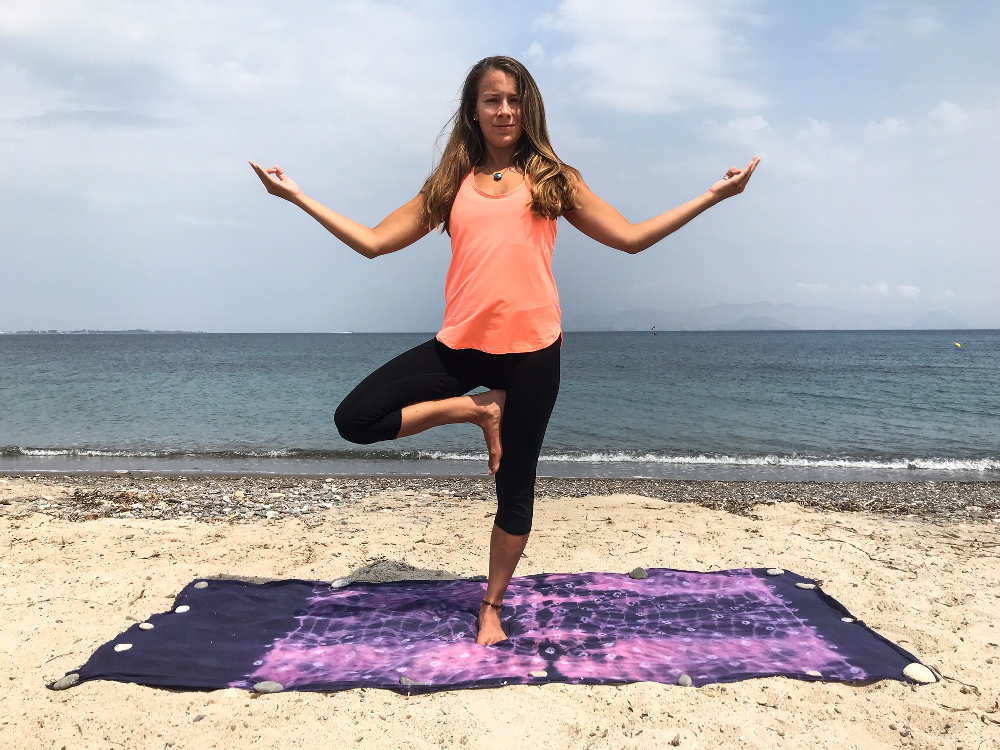
Airplane Pose
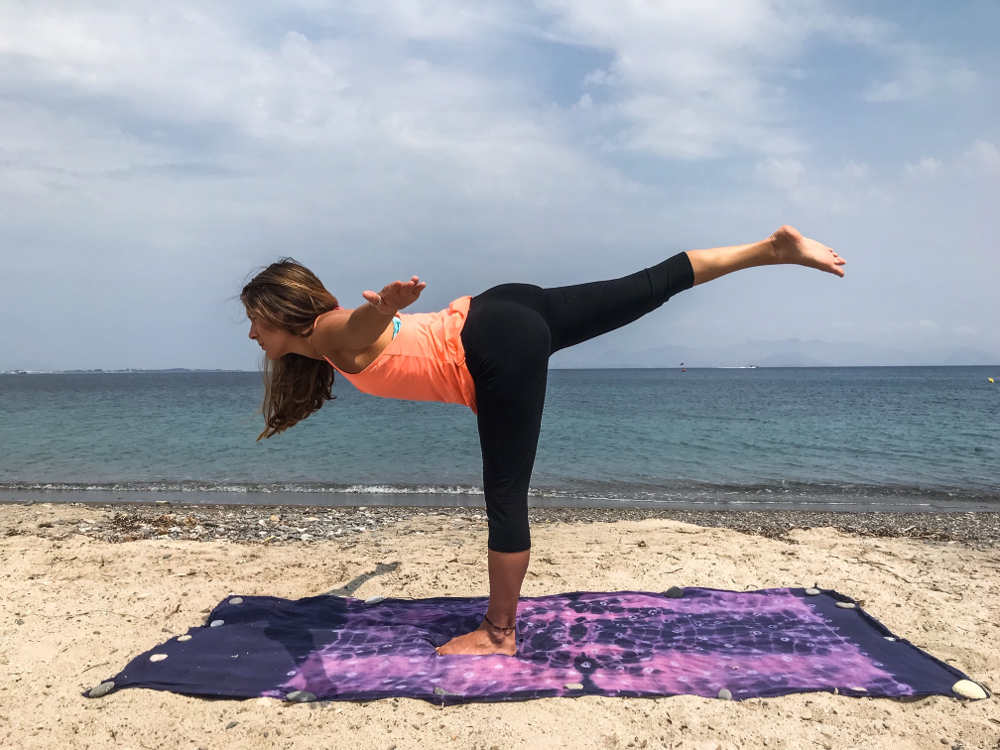
Matchstick Pose

Triangle Pose
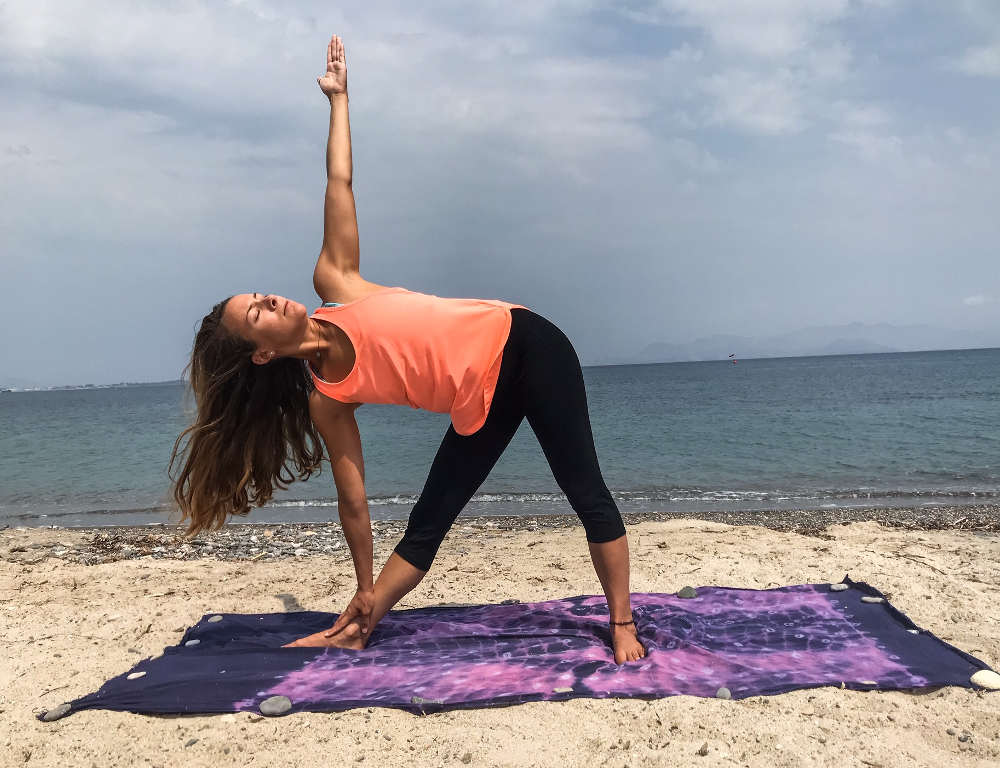
Revolved Triangle Pose
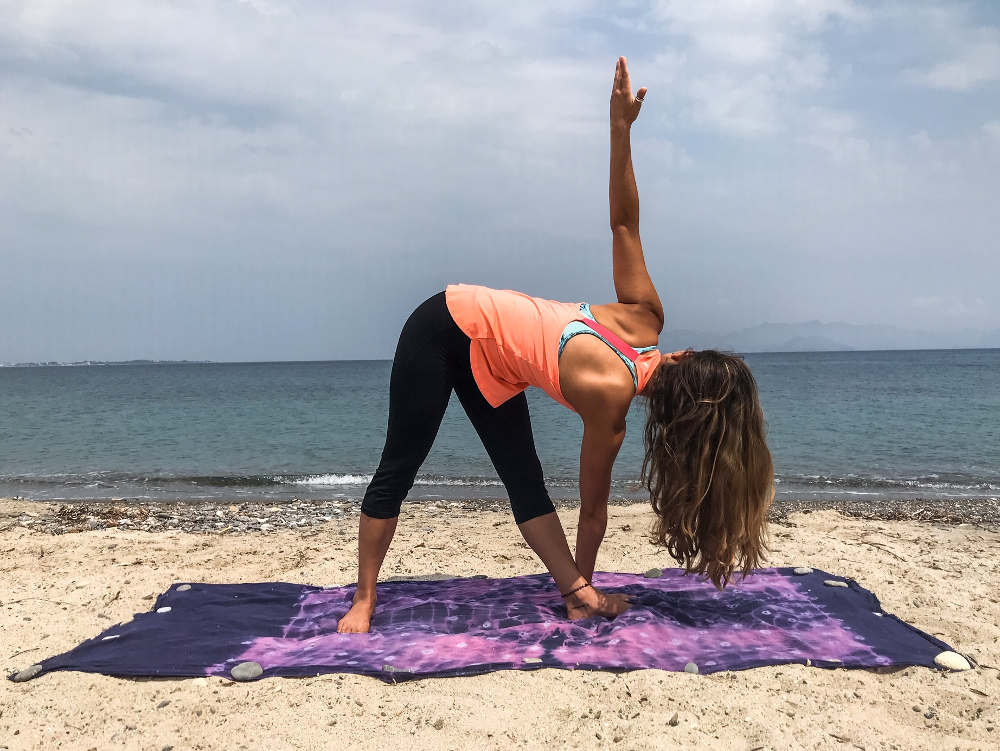
Frog Pose

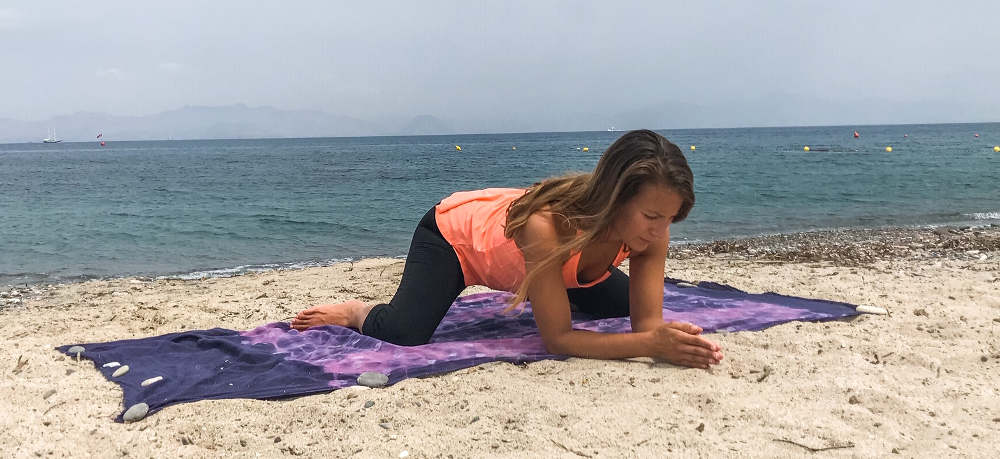
Camel Pose

Headstand

Headstand Variation

Namaste!

Why this sequence?
As previously mentioned, sand is challenging for the ankles, which is why I love a standing sequence that involves a lot of balance. Try to hold each asana for five to 10 breaths, depending on how you are feeling. I recommend doing the whole standing section on the right side before moving on to the left. You’ll notice that going from Matchstick Pose to Triangle Pose involves a natural drop back of the leg. It should all feel fluid and organic, as well as challenging.
Frog Pose is perfect for the sand as it allows the body to almost feel as if bolsters or other props have been placed under the knees. Personally, I still find Frog Pose a difficult asana to allow my body to sink in to. Practicing on the sand is a good way to allow the body to sink into it slowly and softly.
Camel Pose is good for the sand as well, because sand is a soft surface on the knees here, too. It’s important to include a back-bending asana in your practice, and since Wheel Pose puts too much stress on the wrists, I prefer to do Camel Pose during my beach yoga practice.
Lastly, headstands! The sand is the perfect place to play around with your headstands. Make a little divot in the sand for your head and you’ll love feeling the softness of the sand surrounding your skull and arms. It’s the perfect surface to try new variations because if you fall, there is no hard surface to smack down on to.
I hope you have the opportunity this summer to give beach yoga a try! If you have any questions, send me an email at wildyogatribe@gmail.com or visit my website at wildyogatribe.com and follow me on my journey.


